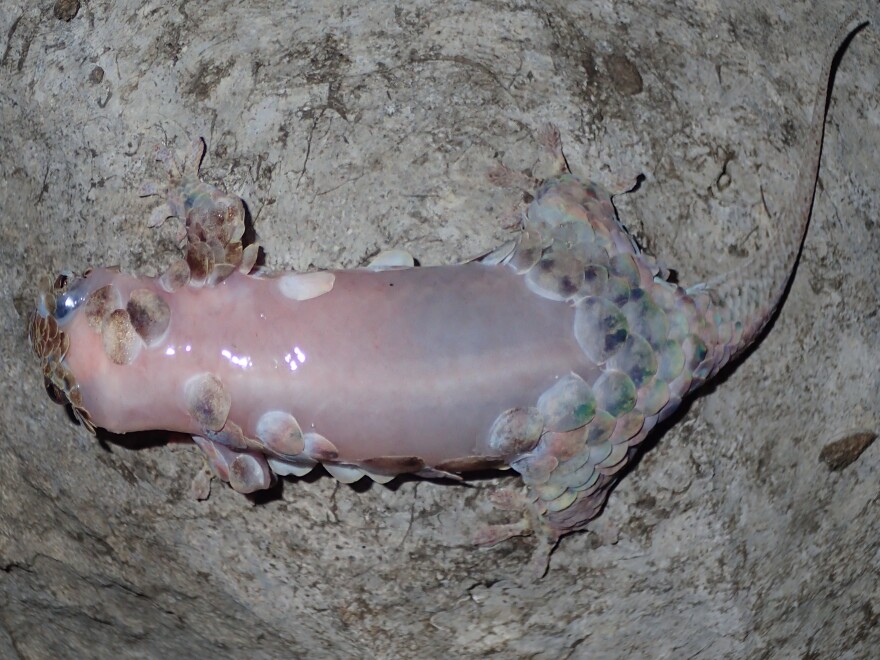This newly discovered gecko species from Madagascar is a master escape artist.
It's extremely fast. Like other lizards, it can lose its tail and grow a new one. And it can shed its scales — the largest of any gecko — in order to flee a predator.
Researchers from the U.S., Germany and Colombia described the species Geckolepis megalepis in the journal PeerJ. But as lead author Mark D. Scherz tells The Two-Way, a skilled escape artist is an "absolute nightmare" to study.
A scientist who studies geckos is bound to be adept at catching them — but with this species, "if you grab it, those scales are only there for a fraction of a second," before they slide off in your hand, says Scherz, a PhD candidate at the Ludwig Maximilian University of Munich. Even the most careful handling using cotton balls can still cause damage to the creatures.
Scales and scale counting are typically "the gold standard for most reptile recognition," Scherz adds. But because the scales were not reliable and extremely delicate, the scientists turned to something more stable — the skeleton. They carried out bone analysis using micro-computed tomography to identify the characteristics of the new species. The method also meant that they were not damaging the fragile specimen.
Other members of the genus have large scales — until this species, the largest measured covered about five percent of its body length. Geckolepis megalepis has scales that each cover an astonishing eight percent of its body length, Scherz says.
The large size means they come off particularly easily. He explains why: "We think that means that there's a larger friction area — so there's more surface area for forces to pull against, and there's more of a leverage effect if you have pressure coming from behind."
When the gecko sheds scales, it's unlikely to do so by accident, Scherz says. The animal's muscle tissue suggests that there's "there's some kind of contraction that happens on behalf of the gecko. Maybe it's not a conscious thing, but it's still an active thing. And then they can release it."

The gecko is not naked for long, Scherz adds. It can regenerate its scales in approximately "two to three weeks, which is much faster than any of the other geckos." And when it finishes regrowing, "it looks, as far as we can tell, indistinguishable from the original skin. So that is incredible regeneration ability."
And according to PeerJ, further study of that ability could have applications for humans. The journal says that "regeneration research is already being informed by studies on salamander limbs and lizard tails."
Copyright 2021 NPR. To see more, visit https://www.npr.org.




